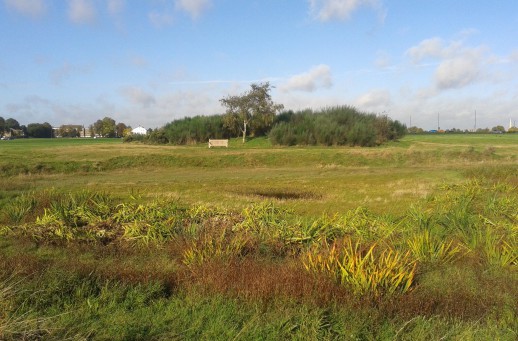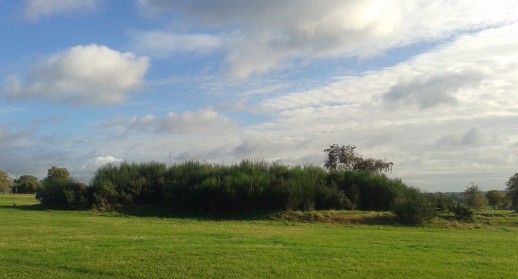Shadows and Reflections: the annual collection of postings where Caught by the River’s contributors and friends take a look back on the events that have shaped the past twelve months. Today it’s the turn of Emma Warren.
One of the reasons I wanted to find a way to mark nature’s holidays was an increasing despair about shopping. I buy stuff, just like you do. It’s just that I’d like our national holidays and our cultural celebrations to be more connected to the spinning mass of planet that we actually live on than the profit margins of retailers. You can live without those Bluetooth speakers and so can the person you’re buying them for. They’re going to break within a year anyway.
The planetary festivals I’ve been marking are mapped over the pulse of the planet rather than shareholder requirements. Solstice and equinox celebrations recognise a real moment in time: a throb, where the planet’s seamless transitions around the sun can be measured, marked and enjoyed for free.
Back in September came the autumn equinox. It was a warm morning, leaning more towards summer than oncoming winter and I ran up to Blackheath so that I could catch the exact moment the season tipped into its next phase, up on that high flatness above the city.
The sun was low and strong and at 8:20am, the moment of equinox, I was sitting on a bench on the path that leads from All Saints Church over to Greenwich Park. Sun on face, eating an apple.
I’d brought an apple with me because the witchy version of the equinox is called Mabon, and apples are connected with Mabon through the Romans who shifted the celebrations into Apollo’s realm. Apple trees were sacred to that god, which probably suited the resident Angles, Saxons and other rag-tag English (note the ish; we’ve always been English) because of existing apple-y harvest festivals.
It sounds like an idyllic morning but to be honest I was pretty strung out. I’d spent the whole of the previous night restlessly dreaming about shards of an unpleasant letter I’d had to write, dreaming phrases and rewriting sentences in a nasty stressed-out half sleep. It was all doing my head in.
Apple finished. What next? I’d met a really nice proper pagan lady at the Good Life festival who told me how to say Mabon properly (more may-bon than mah-bonne) and who mentioned in passing that apples contain a pentagram if you cut them at the right angle. So I broke the core up and picked out the sleek brown seeds, all six of them – the literal seeds of a ceremony right in the palm of my hand.
I walked over towards the Lewisham side of the heath and planted one in the soft mud outside someone’s house. I put another on a concrete square in front of a squat raven that was hopping about like a wired priest. I placed it right in the middle, facing the bird: an offering. The next I flicked into a crater on the western edge, into a dip that signals the quarrying for gravel that happened here throughout the 18th Century. The pip doesn’t travel very far. It’s too light, just following a feathery trajectory before dropping gently to the ground.
Next to the crater is a tufty hillock with a memorial bench on one side. I placed a seed on the middle of the bench, which is dedicated to a young man named Edward and put the fifth seed on the opposite side of the hillock, facing inwards. It immediately disappeared in the gorse and broom.
I completed the circle and sat on Edward’s bench, contemplating the single seed remaining in my hand and my friend Kate, who died a few months before of a brain tumour and who I’d been friends with since I was 18. I miss her. Without really thinking about it I put the remaining seed in my mouth and ate it.
That wasn’t the end of it though. It transpired that this wasn’t any old hillock. This was Whitefield’s Mount, a place of sedition and free speech that I’d never have known about had I not come across Paul Browning’s excellent blog, Runner500, from whom I now quote liberally.
The Mount, where I sat on the bench and ate my final apple pip, was the area’s Speaker’s Corner. Suffragettes from Lewisham, Blackheath and Greenwich addressed ‘exceptionally large crowds’ from the mount. Methodist founding father John Wesley preached there too, in his first ‘field-preach’ in 1739.
The roll-call of fame continues backwards into time: Wat Tyler addressed peasant rebels in 1381 on the Mount before they marched on London and it was a regular meeting point for the Chartists a half century later, with 4,000 people coming to hear leader Peter McDouall speak in July 1842. A Chartist flyer advertising a forthcoming demonstration strikes a contemporary chord: “We and our families are pining in misery, want and starvation! We demand a fair day’s wages for a fair day’s work!.” We could do with him now, railing into a megaphone from the mount against intolerance and the housing crisis.
There’s no blue plaque on the Mount, though, just an island of gorse and scrub and a squat silver birch that pokes out above the thick greenery like a wiry umbrella. This is hidden Blackheath heritage, heath-en heritage.
Finding out about the Mount exemplifies the low-maintenance festivities I’ve been engaged in since discovering the joys of winter solstice last December. You do something, just because you can, and it leads to all sorts of unexpected outcomes, like discovering that a part of the heath you’ve seen countless times is really important spot. A place where new ideas were projected into crowds of local people, changing minds and probably changing lives too.
It’s been a good year. A made-up Beltane celebration in a Stockwell back yard led to some interesting times. Hanging out with my friends for an Imbolc ceremony on Thames shingle was a natural high. I brought Lammas bread to Port Eliot and gave it to a 17 year old who came to talk to me afterwards, and who messaged me later to say thanks, and that he’d taken it to a religiously-orthodox family dinner without disclosing its less-than-orthodox origins.
So don’t focus too much on Christmas and set your sights on the solstice instead. Technically the winter solstice this year is at 4:49am on the morning of Tuesday the 22nd December but we’ll be marking it in our own way, the evening before or the afternoon afterwards. 4am is just too early to get over to Hackney Marshes, where we’ll be making something up – and probably burning something.

